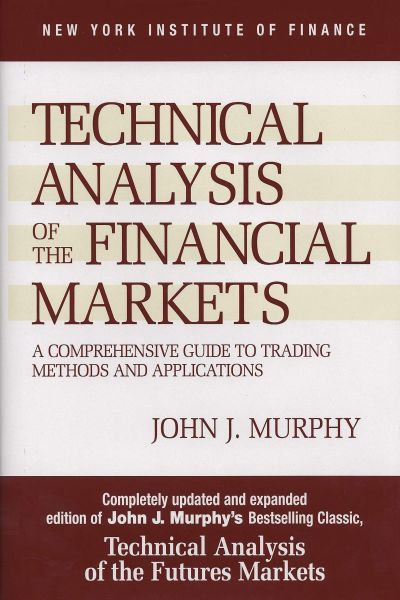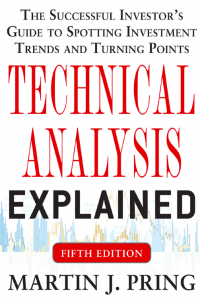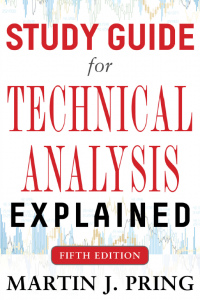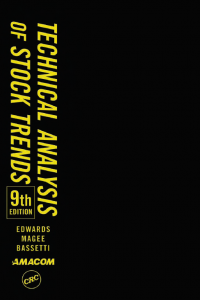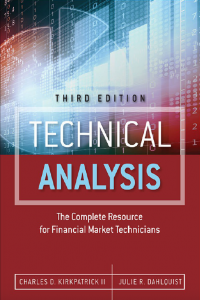Technical Analysis of the Financial Markets A Comprehensive Guide to Trading Methods and Applications
Quyển sách kinh điển về phân tích kỹ thuật của John J. Murphy. Quyển sách bao hàm mọi kiến thức cơ bản về phân tích kỹ thuật giống như một quyển sách giáo khoa.
Đặt in thành sách tại HoaXanh, xem sách in mẩu trong video bên dưới.
![]()
- 190,000đ
- Mã sản phẩm: TEC224332
- Tình trạng: 2
Philosophy of Technical Analysis
Introduction 1
Philosophy or Rationale 2
Technical versus Fundamental Forecasting 5
Analysis versus Timing 6
Flexibility and Adaptability of Technical
Analysis 7
Technical Analysis Applied to Different Trading
Mediums 8
Technical Analysis Applied to Different Time
Dimensions 9
Economic Forecasting 10
Technician or Chartist? 10
A Brief Comparison of Technical Analysis in Stocks and
Futures 12
Less Reliance on Market Averages and Indicators 14
Some Criticisms of the Technical Approach 15
Random Walk Theory 19
Universal Principles
Dow Theory
Introduction 23
Basic Tenets 24
21
The Use of Closing Prices and the Presence of Lines 30
Some Criticisms of Dow Theory 31
Stocks as Economic Indicators 32
Dow Theory Applied to Futures Trading 32
Conclusion 33
Chart Construction
Introduction 35
Types of Charts Available
Candlesticks 37
36
Arithmetic versus Logarithmic Scale 39
Construction of the Daily Bar Chart 40
Volume 41
Futures Open Interest 42
Weekly and Monthly Bar Charts 45
Conclusion 46
ix
35
Basic Concepts of Trend 49
Definition of Trend 49
Trend Has Three Directions 51
Trend Has Three Classifications 52
Support and Resistance 55
Trendlines 65
The Fan Principle 74
The Importance of the Number Three 76
The Relative Steepness of the Trendline 76
The Channel Line 80
Percentage Retracements 85
S peed Resistance Lines 87
Gann and Fibonacci Fan Lines 90
Internal Trendlines 90
Reversal Days 90
Price Gaps 94
Conclusion 98
!¥¾{
"")
Major Reversal Patterns
Introduction 99
Price Patterns 100
Two Types of Patterns: Reversal and
Continuation 100
The Head and Shoulders Reversal Pattern 103
The Importance of Volume 107
Finding a Price Objective 108
The Inverse Head and Shoulders 110
Complex Head and Shoulders 113
Triple Tops and Bottoms 115
Double Tops and Bottoms 117
Variations from the Ideal Pattern 121
S aucers and S pikes 125
Conclusion 128
Continuation Patterns
Introduction 129
Triangles 130
The Symmetrical Triangle 132
The Ascending Triangle 136
The Descending Triangle 138
The Broadening Formation 140
Flags and Pennants 141
The Wedge Formation 146
The Rectangle Formation 147
The Measured Move 151
The Continuation Head and Shoulders Pattern 153
Confirmation and Divergence 155
Conclusion 156
Volume and Open Interest
Introduction 157
Volume and Open Interest as Secondary
Indicators 158
Interpretation of Volume for All Markets 162
Interpretation of Open Interest in Futures 169
Summary of Volume and Open Interest Rules
Blowoffs and Selling Climaxes 175
Commitments of Traders Report 175
Watch the Commercials 176
Net Trader Positions 177
Open Interest In Options 177
Put/Call Ratios 178
174
Combine Option Sentiment With Technicals 179
Conclusion 179
t?"'i,k
Long Term Charts
Introduction 181
The Importance of Longer Range Perspective 182
Construction of Continuation Charts for Futures 182
The Perpetual Contract™ 184
Long Term Trends Dispute Randomness 184
Patterns on Charts: Weekly and Monthly
Reversals 185
Long Term to Short Term Charts 185
Why Should Long Range Charts Be Adjusted for
Inflation? 186
Long Term Charts Not Intended for Trading
Purposes 188
Examples of Long Term Charts 188
Moving Averages Introduction 195 The Moving Average: A Smoothing Device with a Time Lag 197 Moving Average Envelopes 207 Bollinger Bands 209 Using Bollinger Bands as Targets 210 Band Width Measures Volatility 211 Moving Averages Tied to Cycles 212 Fibonacci Numbers Used as Moving Averages 212 Moving Averages Applied to Long Term Charts 213 The Weekly Rule 215 To Optimize or Not 220 Summary 221 The Adaptive Moving Average 222 Alternatives to the Moving Average 223 Oscillators and Contrary Opinion Introduction 225 Oscillator Usage in Conjunction with Trend 226 Measuring Momentum 228
Measuring Rate of Change (ROC) 234 Constructing an Oscillator Using Two Moving Averages 234 Commodity Channel Index 237 The Relative Strength Index (RSI) 239 Using the 70 and 30 Lines to Generate Signals 245 Stochastics (K%D) 246 Larry Williams %R 249 The Importance of Trend 251 When Oscillators are Most Useful 251 Moving Average Convergence/Divergence (MACD) 252 MACD Histogram 255 Combine Weeklies and Dailies 256 The Principle of Contrary Opinion in Futures 257 Investor Sentiment Readings 261 Investors Intelligence Numbers 262 Point and Figure Charting Introduction 266 The Point and Figure Versus the Bar Chart 270 Construction of the Intraday Point and Figure Chart 270 The Horizontal Count 274 Price Patterns 275Measuring Rate of Change (ROC) 234 Constructing an Oscillator Using Two Moving Averages 234 Commodity Channel Index 237 The Relative Strength Index (RSI) 239 Using the 70 and 30 Lines to Generate Signals 245 Stochastics (K%D) 246 Larry Williams %R 249 The Importance of Trend 251 When Oscillators are Most Useful 251 Moving Average Convergence/Divergence (MACD) 252 MACD Histogram 255 Combine Weeklies and Dailies 256 The Principle of Contrary Opinion in Futures 257 Investor Sentiment Readings 261 Investors Intelligence Numbers 262 Point and Figure Charting Introduction 266 The Point and Figure Versus the Bar Chart 270 Construction of the Intraday Point and Figure Chart 270 The Horizontal Count 274 Price Patterns 275
Measuring Rate of Change (ROC) 234 Constructing an Oscillator Using Two Moving Averages 234 Commodity Channel Index 237 The Relative Strength Index (RSI) 239 Using the 70 and 30 Lines to Generate Signals 245 Stochastics (K%D) 246 Larry Williams %R 249 The Importance of Trend 251 When Oscillators are Most Useful 251 Moving Average Convergence/Divergence (MACD) 252 MACO Histogram 255 Combine Weeklies and Dailies 256 The Principle of Contrary Opinion in Futures 257 Investor Sentiment Readings 261 Investors Intelligence Numbers 262 Point and Figure Charting Introduction 266 The Point and Figure Versus the Bar Chart 270 Construction of the Intraday Point and Figure Chart 270 The Horizontal Count 274 Price Patterns 2753 Box Reversal Point and Figure Charting 277 Construction of the 3 Point Reversal Chart 278 The Drawing of Trendlines 282 Measuring Techniques 286 Trading Tactics 286 Advantages of Point and Figure Charts P&F Technical Indicators 292 Computerized P&F Charting 292 P&F Moving Averages 294 Conclusion 296 r- Japanese Candlesticks Introduction 297 Candlestick Charting 297 Basic Candlesticks 299 Candle Pattern Analysis 301 Filtered Candle Patterns 306 Conclusion 308 Candle Patterns 309 Elliott Wave Theory Historical Background 319 288 The Basic Tenets of the Elliott Wave Principle 320Connection Between Elliott Wave and Dow Theory 324 Corrective Waves 324 The Rule of Alternation 331 Channeling 332 Wave 4 as a Support Area 334 Fibonacci Numbers as the Basis of the Wave Principle 334 Fibonacci Ratios and Retracements 335 Fibonacci Time Targets 338 Combining All Three Aspects of Wave Theory 338 Elliott Wave Applied to Stocks Versus Commodities 340 Summary and Conclusions 341 Reference Material Time Cycles Introduction 343 Cycles 344 342 How Cyclic Concepts Help Explain Charting Techniques 355 Dominant Cycles 358 Combining Cycle Lengths 361 The Importance of Trend 361 Left and Right Translation 362 How to Isolate Cycles 363Seasonal Cycles 369 Stock Market Cycles 373 The January Barometer 373 T he Presidential Cycle 373 Combining Cycles with Other Technical Tools 374 Maximum Entropy Spectral Analysis 374 Cycle Reading and Software 375 Computers and Trading Systems 377 Introduction 377 Some Computer Needs 379 Grouping Tools and Indicators 380 Using the Tools and Indicators 380 Welles Wilder's Parabolic and Directional Movement Systems 381 Pros and Cons of System Trading 387 Need Expert Help? 389 Test Systems or Create Your Own 390 Conclusion 390 \ Money Management and Trading Tactics Introduction 393 T he Three Elements of Successful Trading 393Money Management Reward to Risk Ratios 394 397 Trading Multiple Positions: Trending versus Trading Units 398 What to Do After Periods of Success and Adversity 399 Trading Tactics 400 Combining Technical Factors and Money Management 403 Types of Trading Orders 403 From Daily Charts to Intraday Price Charts 405 The Use of Intraday Pivot Points 407 Summary of Money Management and Trading Guidelines 408 Application to Stocks 409 Asset Allocation 409 Managed Accounts and Mutual Funds 410 Market Profile 411 The Link Between Stocks and Futures: Contents Intermarket Analysis 413 Intermarket Analysis 414 Program Trading: The Ultimate Link 415 The Link Between Bonds and Stocks 416 The Link Between Bonds and Commodities 418 The Link Between Commodities and the Dollar 419

